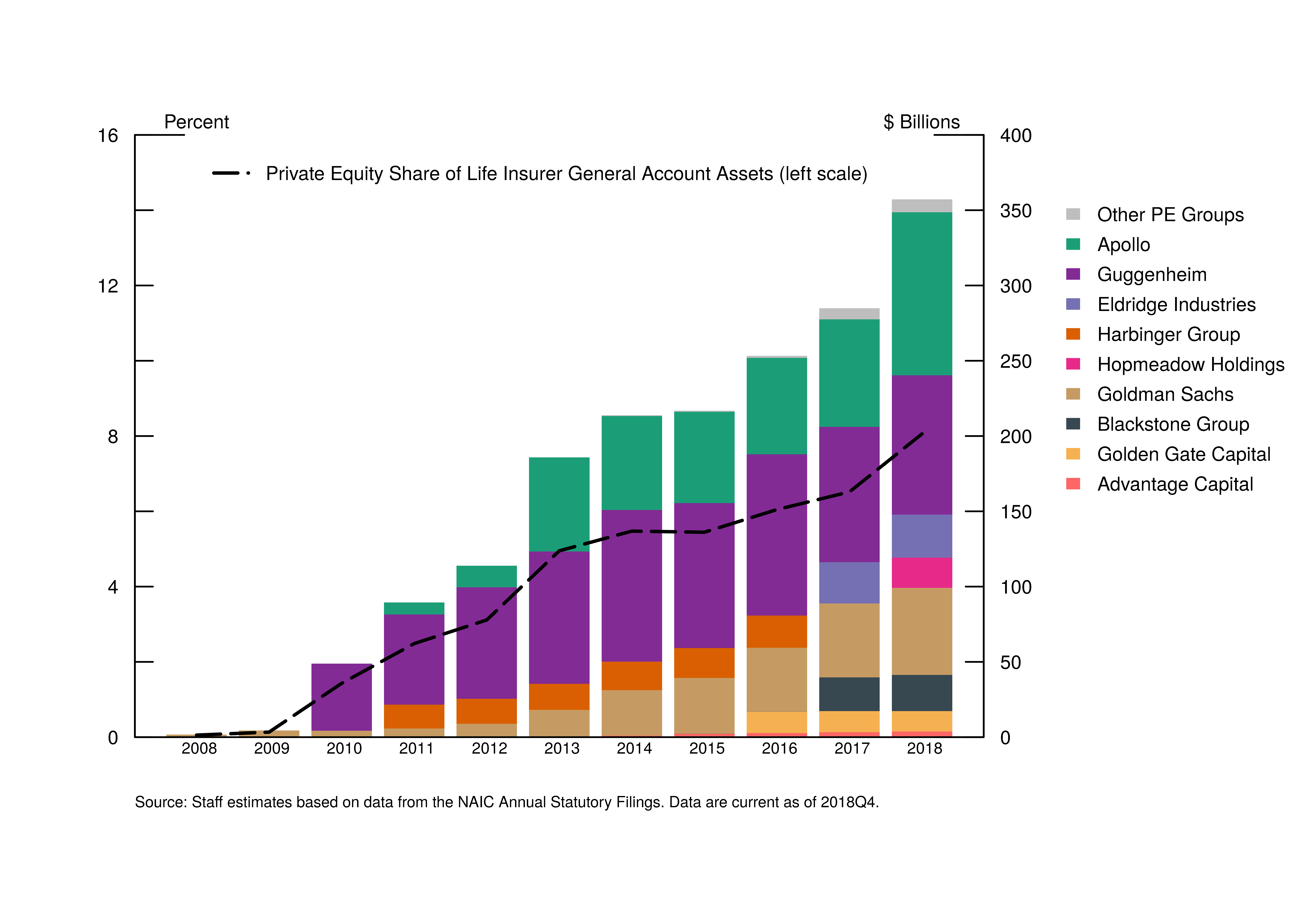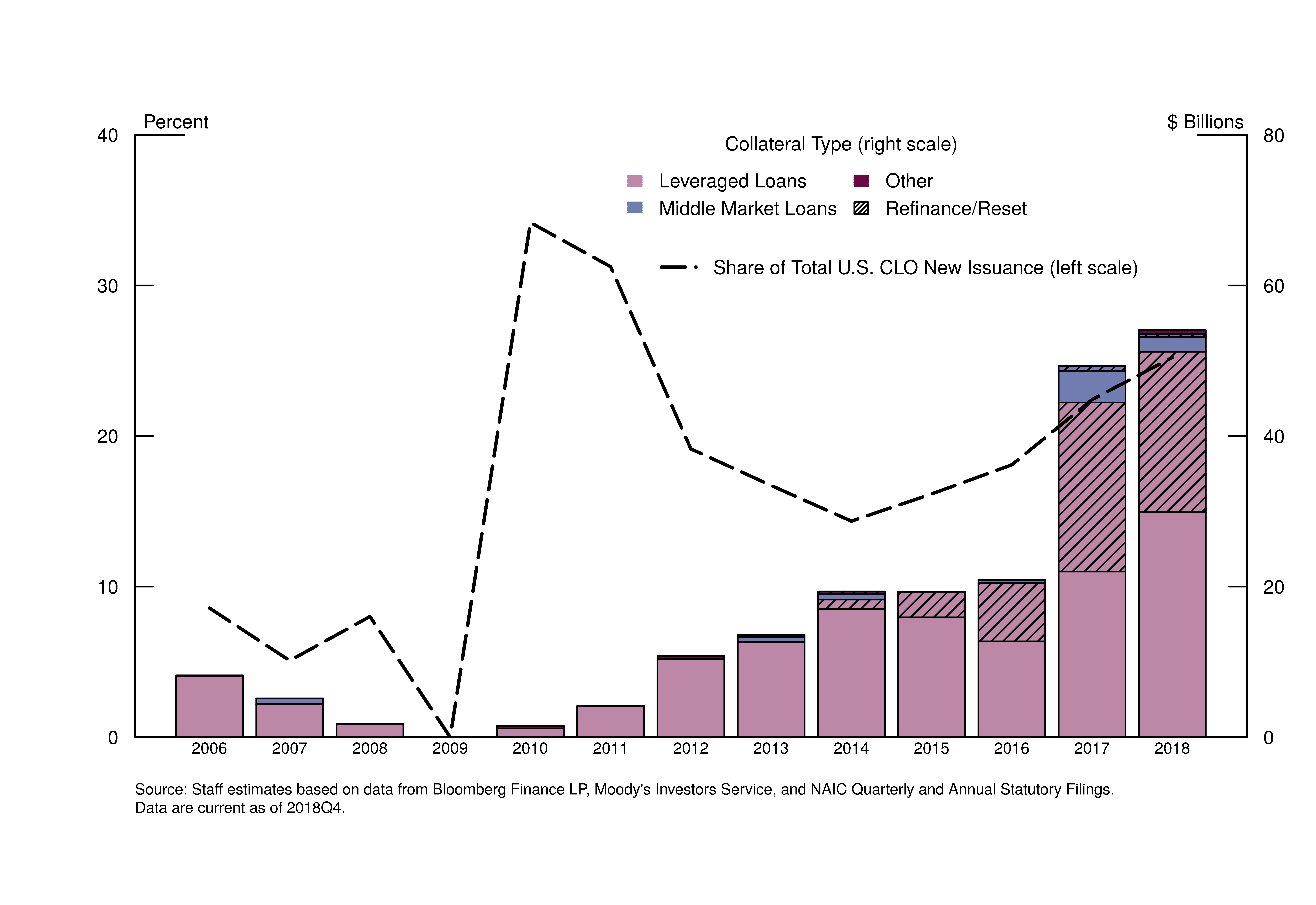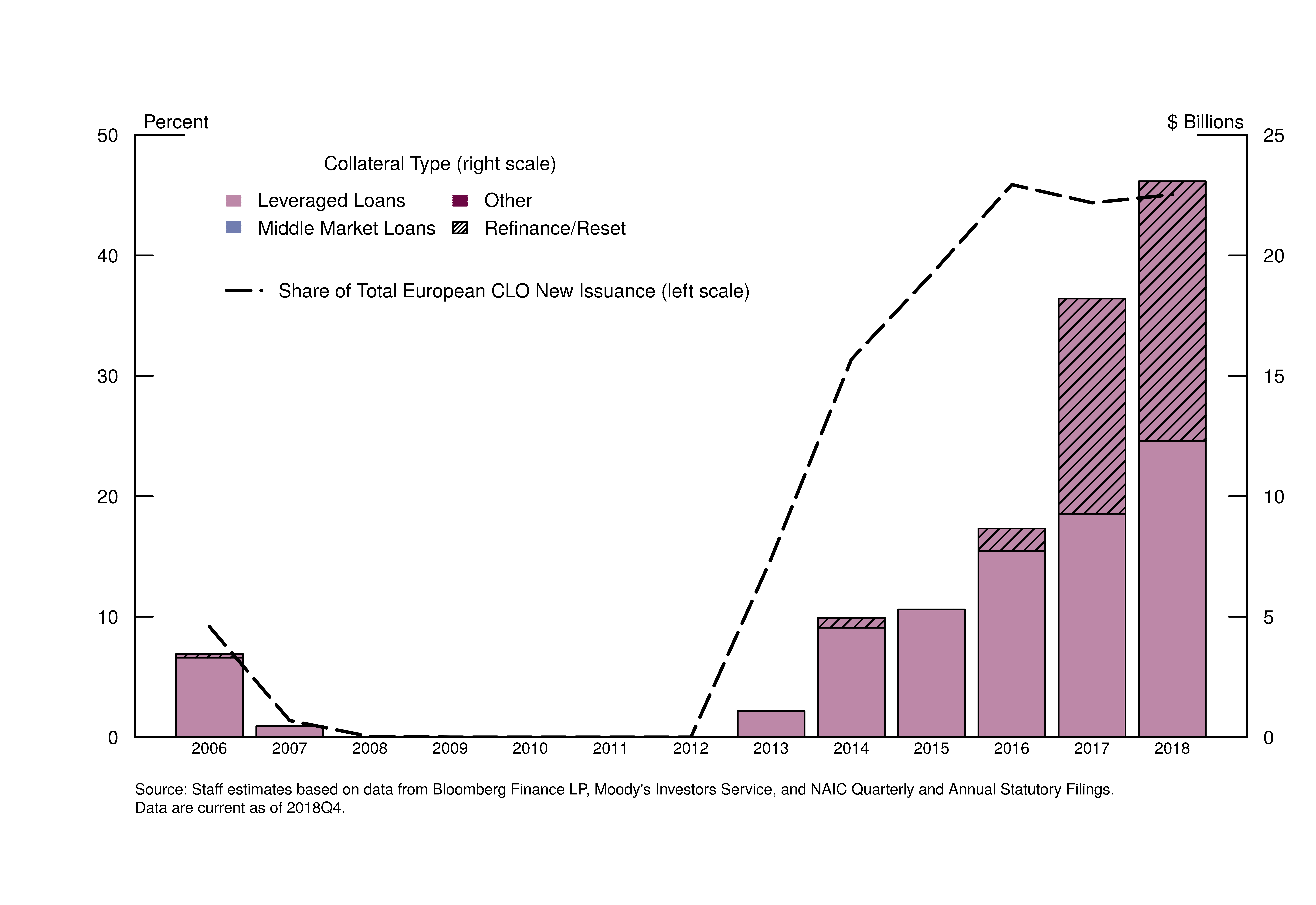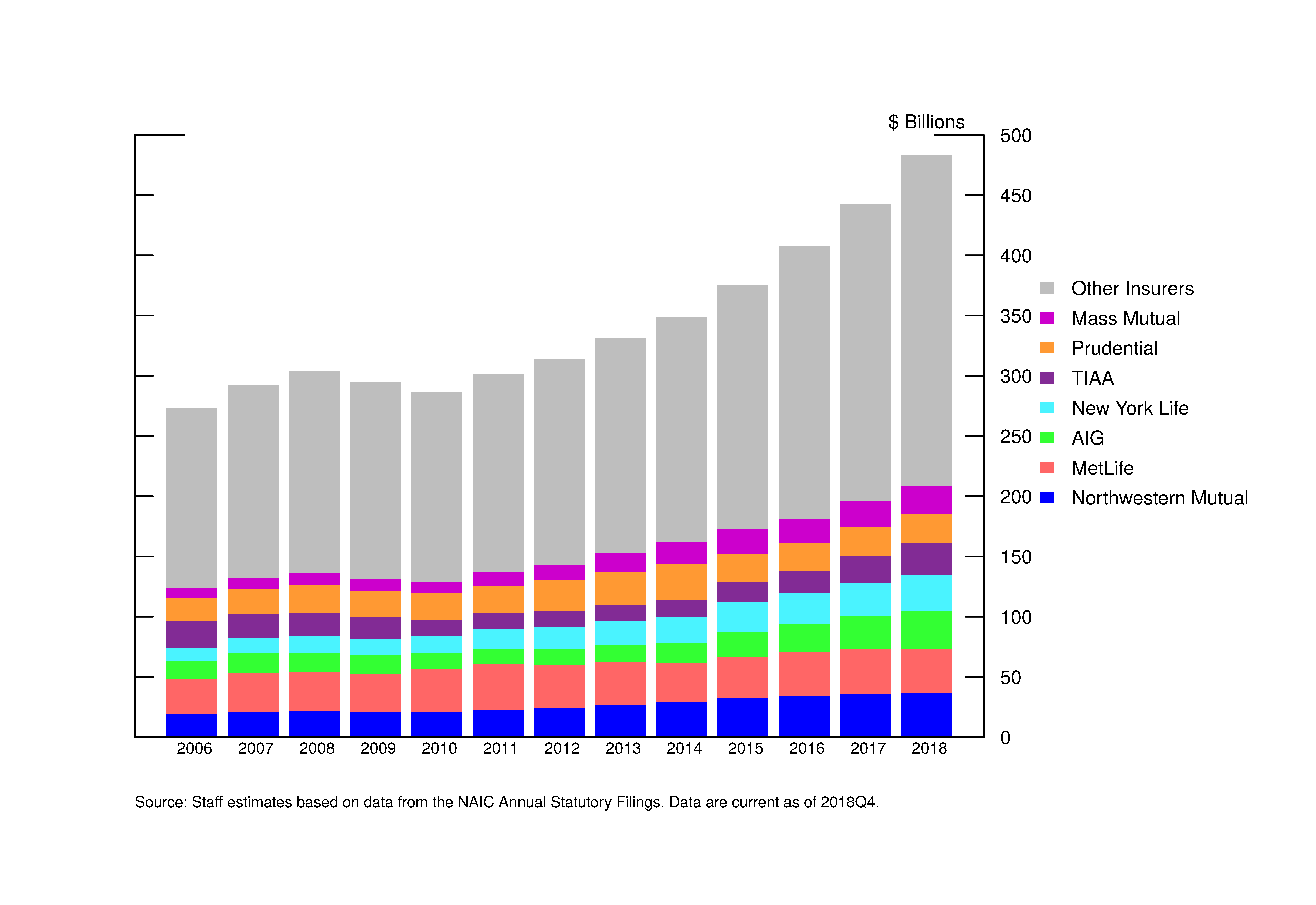In a new paper co-authored with Stephane Verani and Nathan Foley-Fisher, we study the restructuring of financial intermediation in the United States since the 2007-2009 financial crisis. We examine the channel through which life insurance companies lend to corporations by arranging collateralized loan obligations through their affiliated asset managers, as well as through direct lending to corporations via on-balance sheet financing of commercial real estate mortgages and corporate loans.
Figures 1-3: Private Debt Issued by the Asset Managers of U.S. Insurers
As we show in Figure 1-3, the largest U.S. life insurers have entered private debt markets as banks refocused on commercial banking, against a backdrop of unconventional monetary policies and tighter bank regulations. And there is a significant overlap in the insurance companies that are actively issuing commercial real estate mortgage loans and CLOs in private real estate and private credit markets.
Figure 4: Life General Account Assets Controlled by Private Equity Firms.

These insurance companies, many of whom are controlled by private equity firms (Figure 4), are acquiring and deploying vast amounts of annuity capital to capture the illiquidity premium. This includes both sales of individual and group annuities (of which the latter includes pension buyouts), as well as institutional funding agreement products. We conclude that although architecture of the financial system features novel forms of lending, life insurers have become more vulnerable to an aggregate shock to the corporate sector.
For more details and analysis, read our current paper here:


